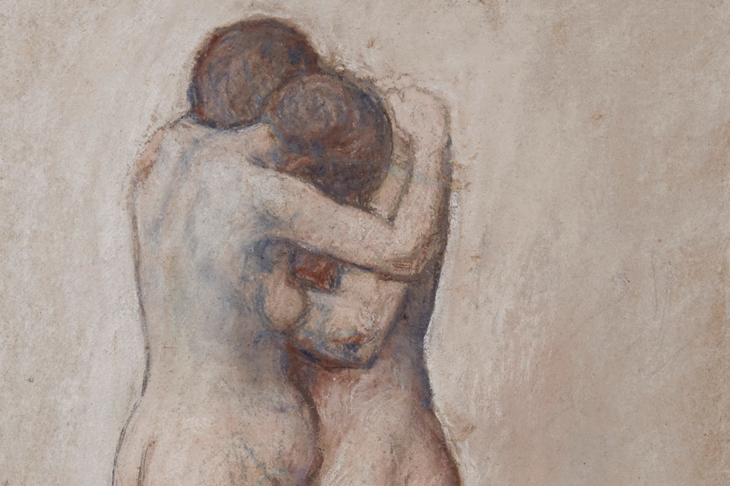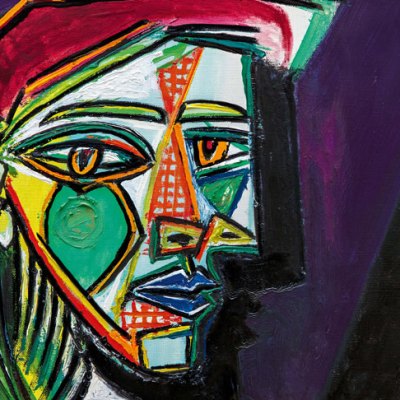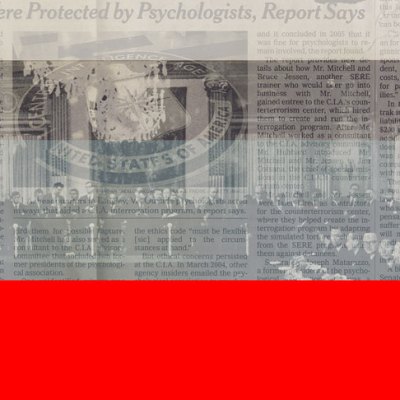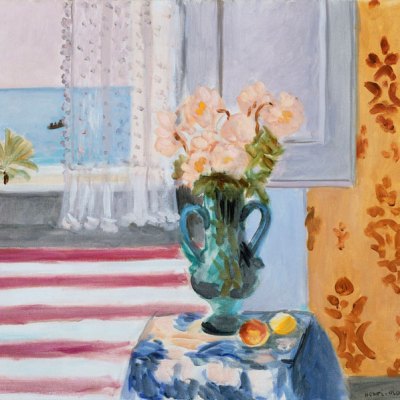Picasso dominated last month’s auctions in London, and promises to steal the limelight again in May when the Rose Period Fillette à la corbeille fleurie of 1905 from the Rockefeller collection is expected to fetch around $70m at Christie’s in New York. Neatly filling the gap between them is the compelling and long-lost pastel L’Étreinte (1903) just unveiled by Christie’s Paris and due to make its auction debut on 22 March. The work was hitherto only known from a low-quality photograph taken by the artist’s dealer Paul Rosenberg in 1920, and no one knew where it was until the descendants of Adolphe Reitzaum, who bought it around that time, called Christie’s specialist Tudor Davies. It has never before been exhibited in public (and indeed has been in a bank vault for years).
What makes the pastel particularly fascinating is that it belongs to a sequence of drawings of a standing nude couple embracing that culminated in the great Blue Period La Vie of 1903, now in the Cleveland Museum of Art – and for the element of autobiography. These pencil sketches and pastels were made when the 22-year-old artist returned to Barcelona and to the studio that he had shared with his close friend Carlos Casagemas, whose suicide in Paris in 1901 had deeply affected Picasso. It seems plausible that the far larger pastel of the same subject, now in the Musée de l’Orangerie, preceded the drawing coming to auction this month. In both, the two figures, one visibly pregnant, embrace with their heads buried into the other’s shoulder in a pose that is at once tender and full of sadness. In the Christie’s drawing, the artist has melded the bodies into one monumental mass. He has also removed all the background detail of a bedroom to isolate and expose the couple in their bleakness.
L’Étreinte (1903), Pablo Picasso. © Christie’s Images Limited

Further sketches see the pose open out and the figures show their faces. She is no longer pregnant. He is Picasso. Finally, in La Vie, the artist substitutes his face for that of Casagemas. The latter’s rumoured impotence was suspected as the motive for his suicide, making unbearably poignant the awkward dislocation between the couple and the mother and child facing them.
While the mood of alienation and despair in L’Étreinte may have derived from Munch as well as his own melancholia, its technique surely shows Picasso rising to the challenge of Degas. Before returning to Barcelona, he had visited a Degas retrospective in Paris and must have marvelled at the artist’s deft manipulation of the medium of pastel and its incomparable capacity to convey the softness and warmth of flesh. Picasso’s palette in the Christie’s pastel may be starkly reduced but this is a highly worked drawing full of telling touches of colour and a blue undertone that brings volume to the figures.
Picasso’s use of pure pastel was fairly short-lived, which makes surviving sheets such as this market rarities. When another Barcelona pastel of 1903, Nu au jambes croisées, turned up at Sotheby’s New York in 2015 it fetched over $12m. This one comes to the block with an estimate of €1.5m–€2.5m – even more of a snip in comparison to $70m.
The Modern Works on Paper sale takes place at Christie’s Paris, on 22 March.



